Last week I spoke with Ken Powell, who’s been leading a sales transformation at SunGard in his role as VP of Global Sales Enablement. (He was also a speaker this week at the Sales 2.0 Conference in Boston.)
He joined SunGard (now FIS Global) just 15 months ago, but his prior experience leading a sales transformation in his previous role at ADP helped him hit the ground running. Already he’s taken many steps to improve sales effectiveness. These have included:
- Equipping the sales team with mobile devices (specifically, Windows 8 tablets, which have “exceeded” his expectations and are “more business friendly” than the iPad);
- Adopting various Sales 2.0 applications (including Xactly, OneSource, LinkedIn, and SAVO, to name just a few);
- simplifying messaging.
As a company, SunGard is in an interesting spot right now. Formed originally through acquisitions starting in the 1980’s, its primary revenue driver is currently software licensing, although they also have a large consulting organization. Ken said one of their aims is to make the consulting aspect a competitive differentiator.
To that end, Ken has already done quite a bit of work with his team to refine the message his teams send to the market. Whether his salespeople are face-to-face with customers or interacting online, Ken has made it clear that they must connect the capabilities of SunGard solutions and capabilities to business outcomes. Given this initiative, it didn’t surprise me to learn that one of the next steps for Ken and his team is to incorporate value-based selling tools (and TCO tools in particular) into the selling process. In his words, proof of value is “a natural course of a conversation that professional salespeople need to have today when they’re interacting with customers, because it’s an expectation.”
Since I’m in the business of creating ROI tools, Ken asked what I tell clients about overcoming the fairly typical objection from customers about “fictitious numbers.” As we all know, numbers can be arranged in ways that will support almost any kind of story (as Mark Twain said “There are three types of lies: lies, damned lies, and statistics.”) As a result, many customers look at numbers supplied by salespeople with a very skeptical eye.
I said that, in my mind, a major benefit of using a value calculator (or other tools) as part of the sales process is transparency. Whenever we train salespeople on how to leverage ROI tools, we advocate what we call a “peel-the-onion” approach. Salespeople should rely on the default calculations of an ROI tool to generate an initial report. But the next step shouldn’t be to simply throw the report over the fence and let the customer evaluate it alone. A much more effective route is to say, “We have this tool to evaluate your business case and decide whether or not this solution makes sense for you. Let’s sit down to discuss the numbers together.” After that, you answer questions and adjust numbers accordingly as you go.
With a peel-the-onion strategy, the customer sees the numbers evolve and thus becomes invested in the final calculation. For example, you might change the default analysis from three years to five years on the spot. Or, if the customer pushes back on a point, you have options. If the customer says, “Ok, I’ve seen your case study and how you’ve done this with other customers, but I personally don’t think you’ll ever get a two percent reduction in labor for us.” At that point you can ask the customer what he or she feels is realistic. If it’s one percent, you plug in the numbers for a one percent reduction in labor and show them what that scenario looks like.
The point is to start the conversation with numbers. Numbers will get the customer engaged. Only then can you talk about features and functions and how you’ll be able to support those numbers with your capabilities.
Great sales leaders must make hundreds of choices that will influence whether or not their sales teams succeed. This is particularly true for sales leaders that undertake a sales transformation, which by definition involves countless changes that all tie back to a unifying business strategy. It’s an interesting journey for any sales leader and I look forward to seeing what evolves at SunGard.
Do you have a sales process that supports a business case? What do you say when customers show skepticism about numbers? Share your thoughts in the comments.














